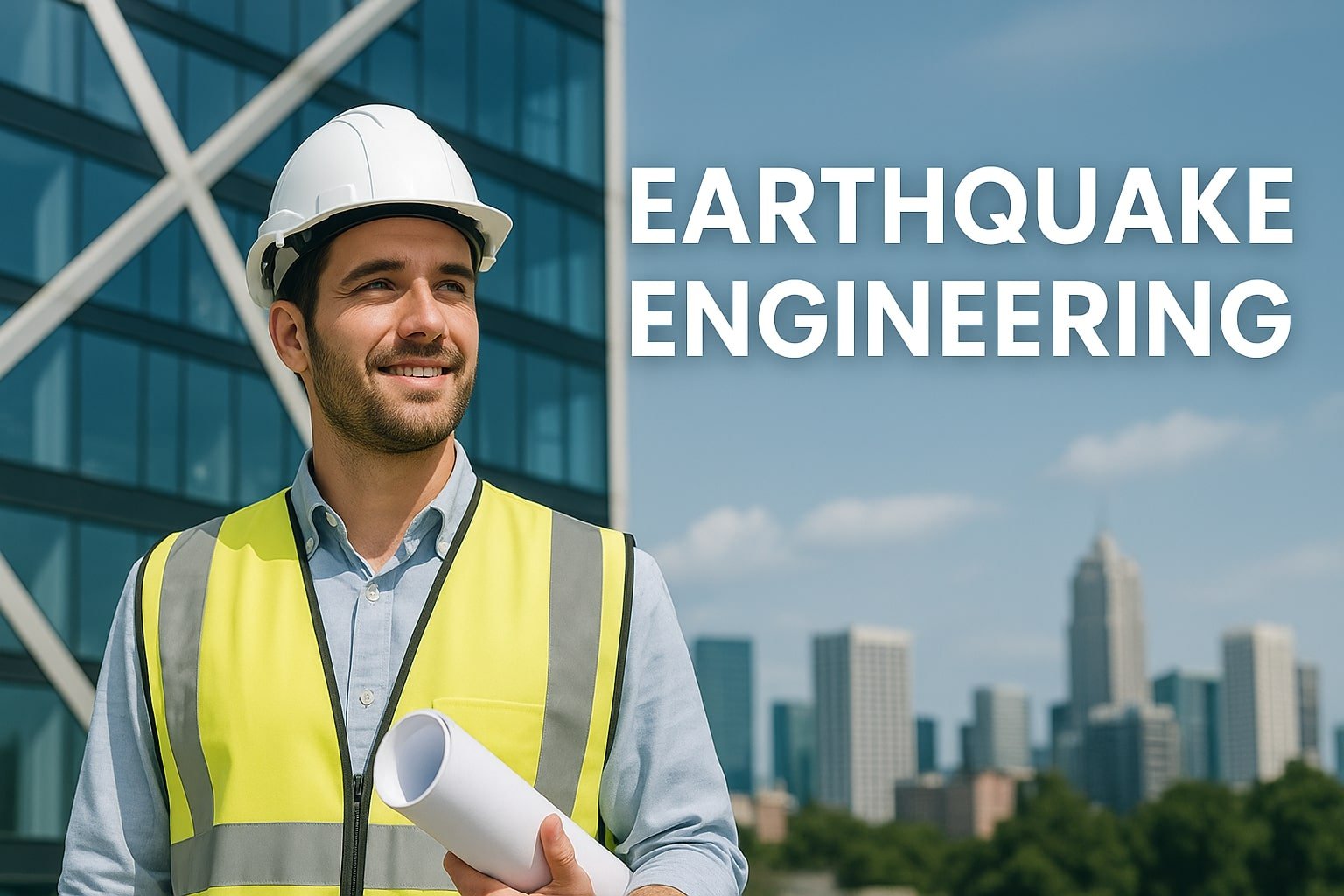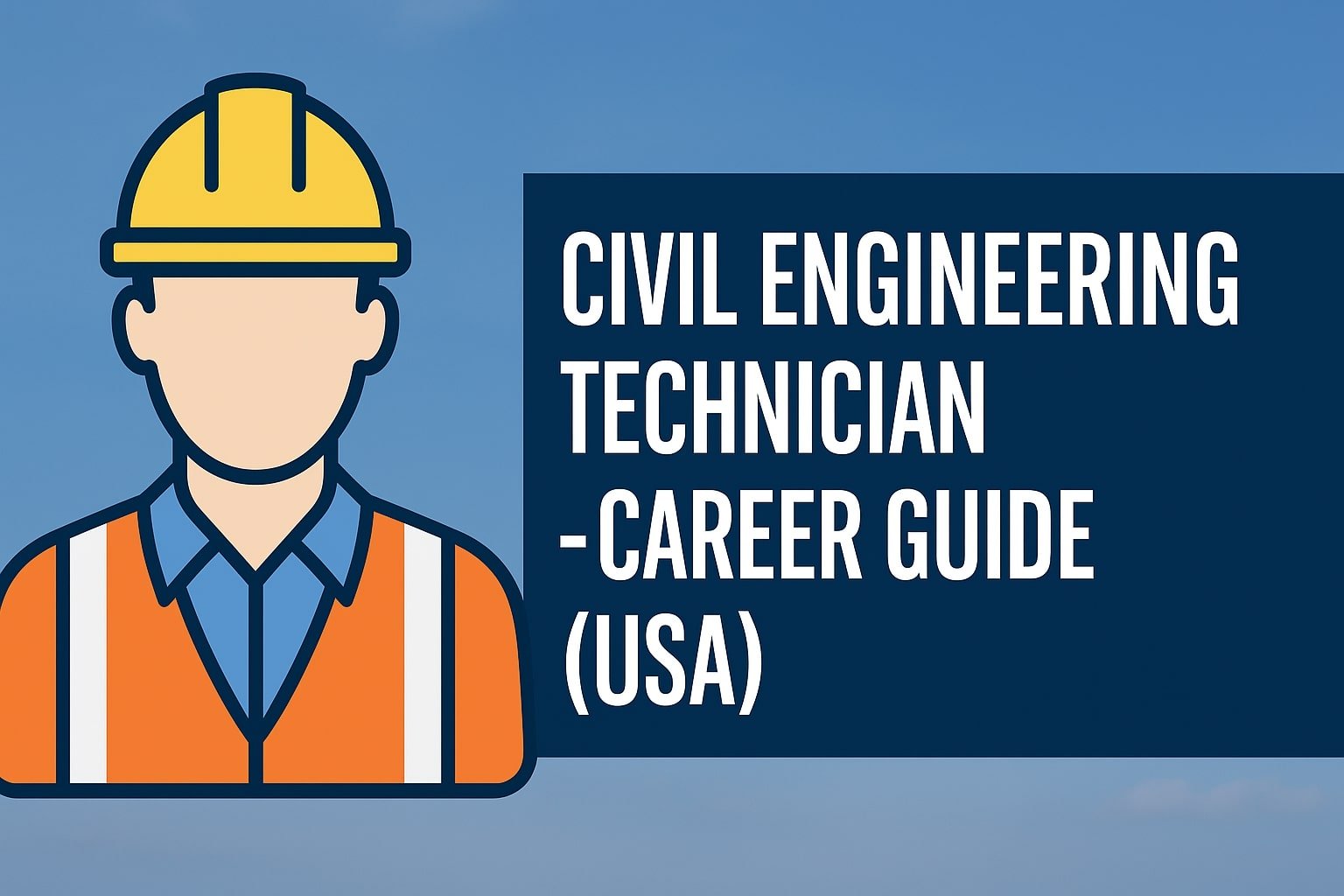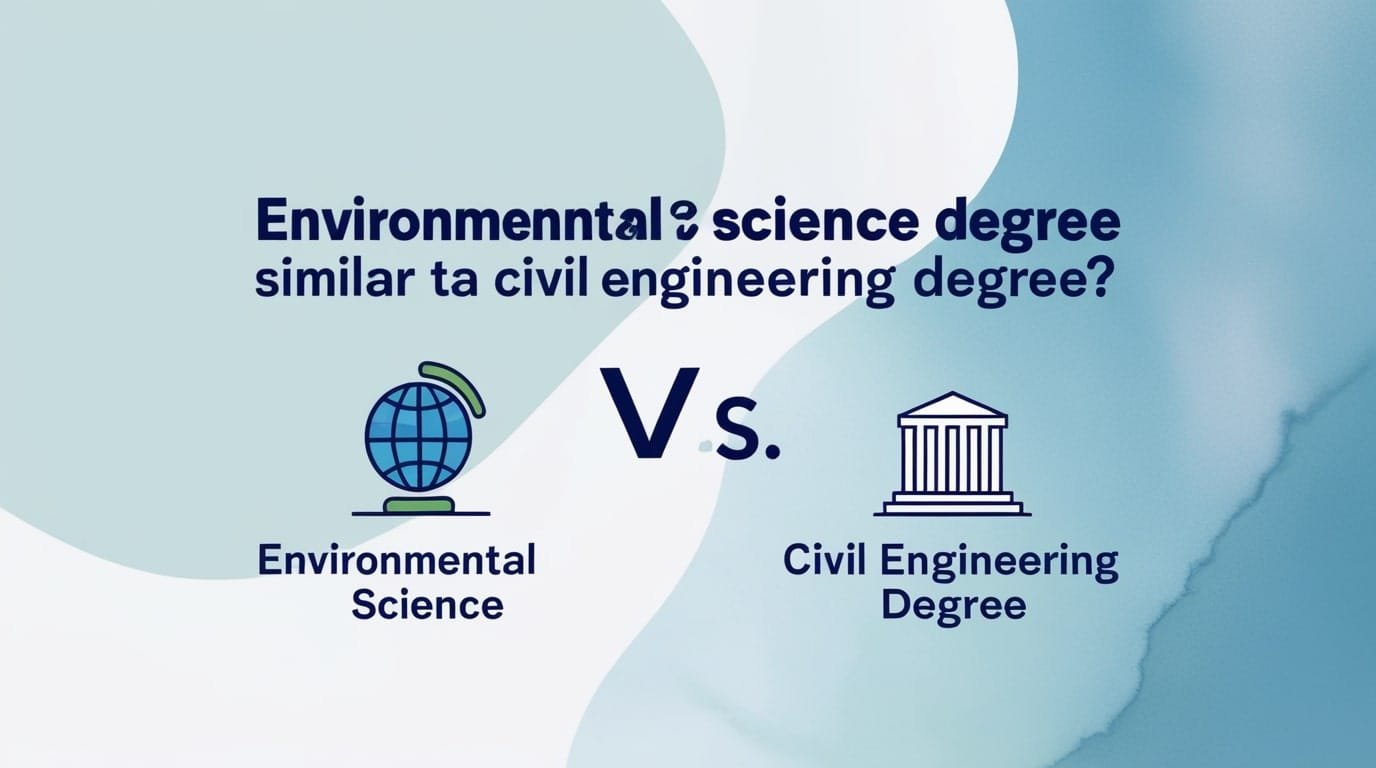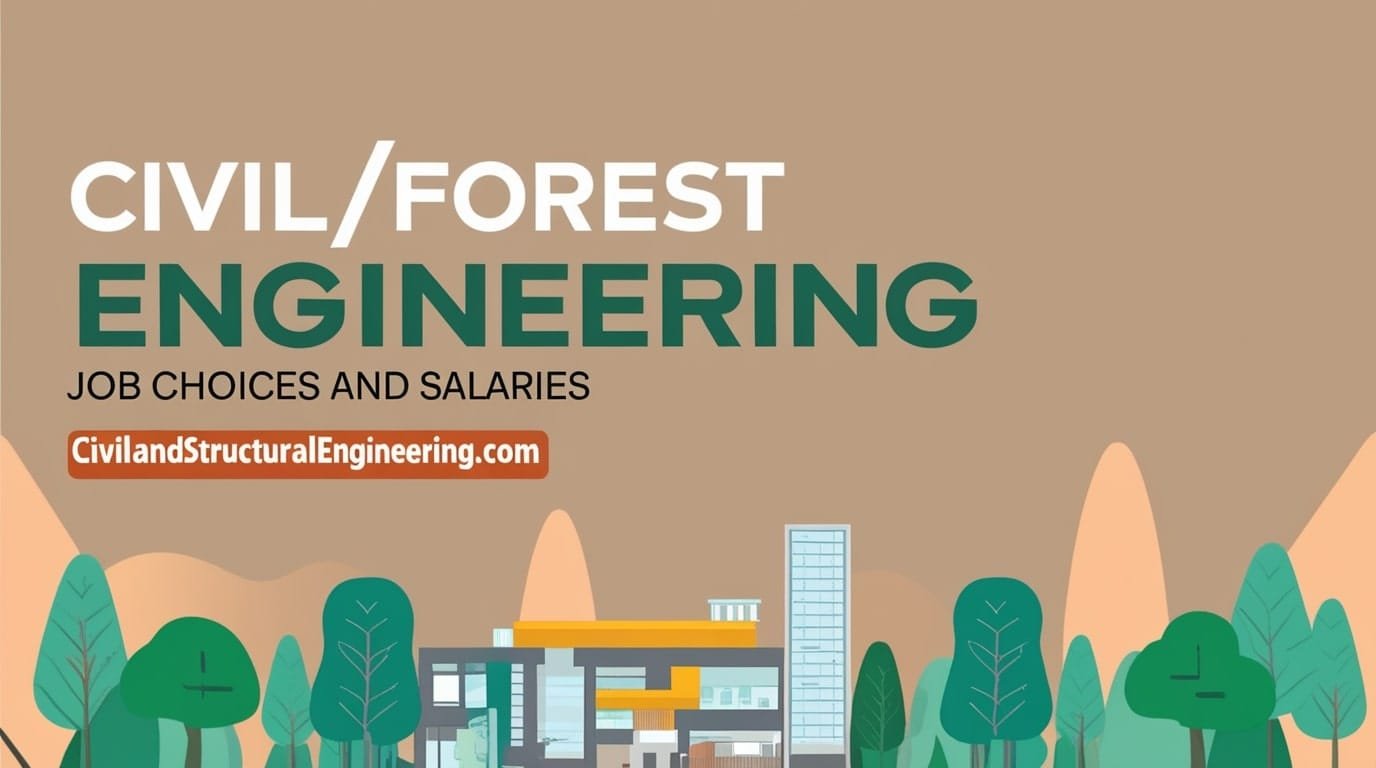Earthquake engineering encompasses more than just buildings. It’s about lives. Every year, cities across the United States get ready for the unpredictable power of nature. From Los Angeles to Anchorage, there is a real chance of earthquakes, which is why earthquake engineers are required. They design safer structures, alter existing ones, and research how buildings will react to ground shaking.
This career guide for earthquake engineers in the USA covers everything, including what the job involves, how to get started, expected pay, companies hiring right now, and the significance of this position in the modern world.
What Is an Earthquake Engineer?
An earthquake engineer is a civil or structural engineer having knowledge of seismic design. Their task is to make sure that buildings, bridges, tunnels, roads, and other infrastructure can resist the strong ground motion generated by an earthquake.
Among ground response analysis, material testing, building codes, and seismic modeling, these professionals handle Apart from building new ones, they routinely evaluate and modernize older buildings. They also assess post-quake damage and help to pinpoint safe-to-occupate buildings in disaster-torn areas.
What Does an Earthquake Engineer Do?
This role blends fieldwork, simulation, and high-stakes decision-making. In the office, earthquake engineers run structural calculations using tools like BIM software, AutoCAD, and finite element analysis platforms. They simulate how seismic waves travel through soil, how buildings sway under pressure, and what materials perform best under extreme forces.
Onsite, they perform rebar inspections, assess foundations, and collect data from engineering lab testing. They also serve as advisors to architects, city engineers, and emergency planners. If a building is damaged, they’ll be the ones who determine if it can be saved—or must come down.
Education and Skills Required
Most earthquake engineers hold a bachelor’s degree in civil engineering and continue with a master’s degree in structural or earthquake engineering. Programs often cover soil-structure interaction, earthquake-resistant materials, and dynamic loading.
Certifications like a PE (Professional Engineer) license are essential for higher-level design roles. Membership in groups like EERI (Earthquake Engineering Research Institute) or ASCE can offer career leverage, too.
You’ll need to be skilled in:
- Seismic hazard assessment
- Blueprint interpretation
- AutoCAD and Civil 3D
- Construction safety practices
- Field data collection
- Technical communication skills
How to Become an Earthquake Engineer in the USA
If you’re starting out, focus on high school courses in physics, calculus, and earth sciences. Then pursue a bachelor’s in civil engineering. Choose electives or minors in geotechnical engineering or urban infrastructure resilience.
After graduation, complete internships in construction, infrastructure, or research roles. Some of the best earthquake engineers start in co-op programs with firms working in high-risk regions like California or Alaska.
Take and pass the FE exam after your degree, then work under a licensed engineer before qualifying for the PE exam.
For those serious about seismic design, a master’s degree focused on earthquake engineering offers a competitive edge.
Career Path and Growth
You’ll likely start as a junior structural analyst or a drafting technician working under a licensed engineer. With experience, you can move into seismic project management, urban planning advisory, or even research and teaching roles.
Later, you might become a disaster response consultant, work with FEMA, or lead risk assessments for entire cities. Earthquake engineering also connects well with careers in green building, smart city infrastructure, and climate adaptation engineering.
Average Salary for Earthquake Engineers in the USA
Earthquake engineers earn more than general civil engineers, especially in seismic-prone regions and with specialized credentials. Below is a detailed table of top 10 employers, with salary and company insights:
| Company Name | Description | Est. Revenue | HQ Location | Avg. Salary (USD) |
|---|---|---|---|---|
| Arup | Global leader in seismic and structural design | $2B+ | London / NYC | $118,000 |
| AECOM | Infrastructure consulting and urban resilience | $14.4B | Dallas, TX | $112,000 |
| Jacobs Engineering | Federal and seismic infrastructure provider | $16.3B | Dallas, TX | $115,000 |
| WSP Global | Sustainable infrastructure and transportation | $10.9B | Montreal / NYC | $111,500 |
| Stantec | Urban planning, seismic retrofitting | $4.5B | Edmonton, CA | $106,000 |
| Bechtel | Mega-projects, disaster recovery | $17.6B | Reston, VA | $120,000 |
| USGS (Govt.) | Earthquake mapping and seismic risk | $1.6B (budget) | Reston, VA | $97,000 |
| FEMA | Emergency infrastructure and recovery | $28.4B (budget) | Washington, DC | $104,000 |
| Caltrans | Seismic bridge inspection & highways | $20B (state budget) | Sacramento, CA | $108,000 |
| PEER Center (UC Berkeley) | Seismic research and resilience modeling | Public grant-funded | Berkeley, CA | $92,000 |
These salaries can rise sharply with a PE license or graduate degree. On average, entry-level roles start around $78,000, while top-tier experts can cross $130,000/year, especially if they consult independently.
Job Outlook and Demand
The demand for earthquake engineers is stable—and growing. According to the BLS job outlook, civil engineering jobs will rise 5% over the next decade, but niche areas like seismic design may grow even faster due to increasing urbanization.
The U.S. faces a massive infrastructure resilience gap, especially in earthquake-prone states. Combine that with the rise in green construction trends and smart city development, and you have a role that’s not only in demand but essential.
Moreover, cities like Los Angeles, San Francisco, Seattle, and Anchorage are investing billions into seismic upgrades, creating huge opportunity for certified engineers.
Top Companies Hiring Earthquake Engineers (Detailed Table)
| Company | Worth / Revenue | Description | Location |
|---|---|---|---|
| AECOM | $14.4 Billion | Leader in disaster recovery and seismic engineering | Dallas, TX |
| Bechtel | $17.6 Billion | Global infrastructure giant with earthquake-ready megaprojects | Reston, VA |
| Arup | $2+ Billion | Renowned for innovation in resilient urban design | New York, NY |
| WSP Global | $10.9 Billion | Sustainability-focused engineering and seismic retrofitting | NYC / Montreal |
| Jacobs Engineering | $16.3 Billion | High-risk infrastructure specialists | Dallas, TX |
| Stantec | $4.5 Billion | Seismic upgrades in public schools and transportation | Canada / USA |
| FEMA | $28.4B budget | Federal emergency response and infrastructure programs | Washington, DC |
| USGS | $1.6B budget | Research and seismic hazard forecasting | Reston, VA |
| Caltrans | $20B budget | Oversees highway retrofitting in California | Sacramento, CA |
| UC Berkeley PEER | Grant funded | Center for seismic safety research and engineering models | Berkeley, CA |
These companies are active on job boards like USAJobs, Indeed, and LinkedIn—and frequently post roles under civil tech, seismic design, and structural analyst titles.
Day in the Life of an Earthquake Engineer
One morning, you’re reviewing new seismic building codes over coffee. By noon, you’re running a simulation of ground movement through soft soil near San Francisco. After lunch, you visit a downtown site where you’re testing steel beam anchorage and measuring wall displacements.
No two days are the same. You could be in the lab doing stress analysis or out in the field inspecting cracks after an aftershock. The work is technical, hands-on, and driven by real human impact.
Pros and Cons of the Career
Pros:
- High-paying, purpose-driven work
- Blends office and fieldwork
- In-demand in key metro regions
- Huge societal impact
Cons:
- Requires licensing and ongoing education
- Post-disaster work can be emotionally and logistically intense
- Precision is critical; mistakes carry weight
Still, for engineers who want to protect people and cities, this is one of the most impactful paths.
Final Thoughts
Earthquake engineering isn’t just a niche—it’s a calling. As climate volatility and urban density rise, so does the need for smart, skilled engineers who can turn seismic science into safe streets, schools, and skyscrapers.
With high salaries, a growing job market, and a mission that truly matters, earthquake engineers stand at the crossroads of science and safety. If you’re passionate about structures, problem-solving, and helping communities stay standing when the ground shifts—this is your future.
Frequently Asked Questions
1What is the difference between structural engineering and earthquake engineering?
Structural engineering focuses on designing safe and efficient structures. Earthquake engineering is a subset that specifically addresses seismic safety and performance during earthquakes.
2What is earthquake engineering also known as?
Earthquake engineering is also known as seismic engineering. It focuses on analyzing and designing infrastructure to resist earthquake-induced forces and damage.
3What are the concepts of earthquake engineering?
Core concepts include seismic zoning, structural dynamics, base isolation, soil-structure interaction, and ductility-focused design strategies for safer buildings.
4How do I become a seismic engineer?
Start with a civil or structural engineering degree, pursue a master’s focused on seismic design, gain hands-on experience, and become licensed as a Professional Engineer (PE).
5What do earthquake engineers do?
They analyze and design structures to resist earthquakes, retrofit existing buildings, inspect post-quake damage, and advise on seismic codes and safety standards.
6What is an earthquake specialist called?
They are commonly referred to as seismic engineers, earthquake engineers, or seismic consultants depending on their specialization and work environment.





